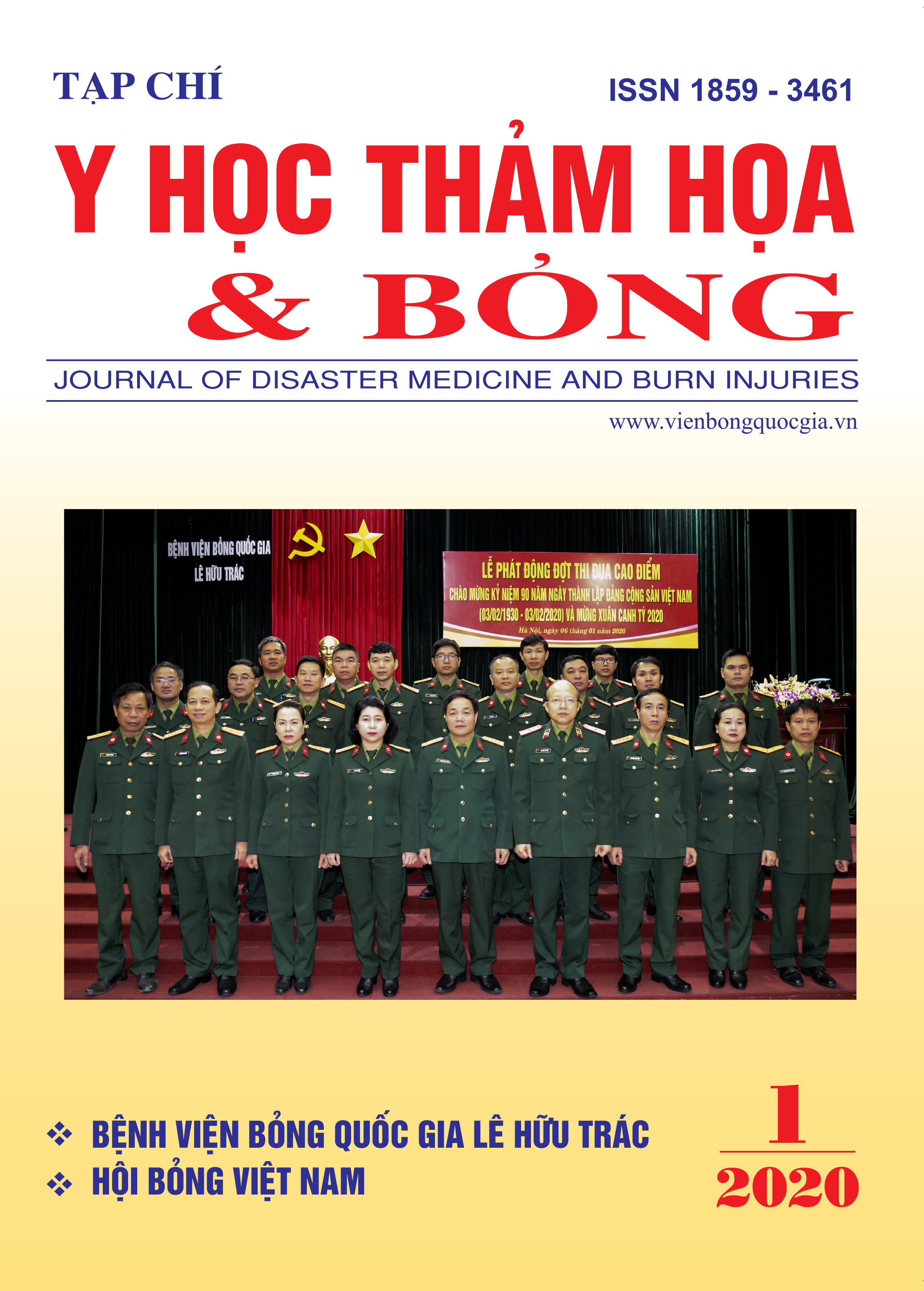Application of invasive arterial blood pressure meter on the diagnosis and treatment of compartment syndrome due to limb circumferential deep burns
Main Article Content
Abstract
Aims: To describe some clinical and subclinical features of compartment syndrome in patients with limb deep circumferential burns.
To evaluate the effectiveness of compartment pressure measurement technique with invasive arterial blood pressure meter in diagnosing and monitoring the treatment of compartment syndrome.
Objects and method: A prospective study was conducted in 29 patients who were diagnosed with limb deep circumferential burns, admitted to the hospital for the first 48 hours after burns, treated in ICU - National Burn Hospital, from November 2018 to November 2019. All patients were monitored for clinical symptoms of compartment syndrome, measured compartment pressure at the circumferential deep burn sites and monitored compartment pressure before and after escharotomy (or fasciotomy).
Results: Compartment syndrome appeared in 17 out of 40 limbs in 29 patients. Most of compartment syndrome occurred in limbs that had fifth-degree, dry necrosis, due to high voltage electrical injury (p < 0.05). Typical clinical symptoms of compartment syndrome included: tightness (100%), pain (64.7%), paresthesia (100%), weak pulse (100%), low SpO2 (86.2 ± 7.8%), increased compartment pressure (45.9 ± 12.9mmHg). After escharotomy (fasciotomy), clinical symptoms of compartment syndrome improved markedly, especially SpO2 (93.4 ± 5.2%), compartment pressure decreased significantly (17.18 ± 5.8mmHg) (p < 0.05). There were 8 limbs which had to be amputated.
Conclusion: Compartment syndrome is a common complication in patients with limb deep circumferential burns. Measurement of the compartment pressure with an invasive arterial blood pressure divice allows early diagnosis and compartment syndrome monitoring.
Article Details
Keywords
Limb deep circumferential burns, compartment syndrome
References
2. David L. Justis, MĐ (1976), “Tibial Compartment Syndromes in Burn Patients”, Tibial Compartment Syndromes, pp. 1004-1008.
3. Boccara D., Lavocat R., (2017), “Pressure guided surgery of compartment syndrome of the limbs in burn patients”, Annals of Burns and Fire Disasters, pp. 193-197.
4. Nguyễn Đức Phúc (1995), "Hội chứng khoang - một biến chứng nặng của gãy xương cẳng chân", Tập san ngoại khoa, 9, tr. 226-227.
5. Mai Xuân Thảo (2009), “Nghiên cứu lâm sàng, cận lâm sàng và điều trị tại chỗ bỏng do dòng điện cao thế” luận án tiến sỹ y học, Học viện Quân y.
6. Đỗ Quang Hùng (1998), “Nghiên cứu đặc điểm lâm sàng và điều trị ngoại khoa bỏng do luồng điện”, Luận án tiến sỹ y học, Học viện Quân y, Hà Nội.


